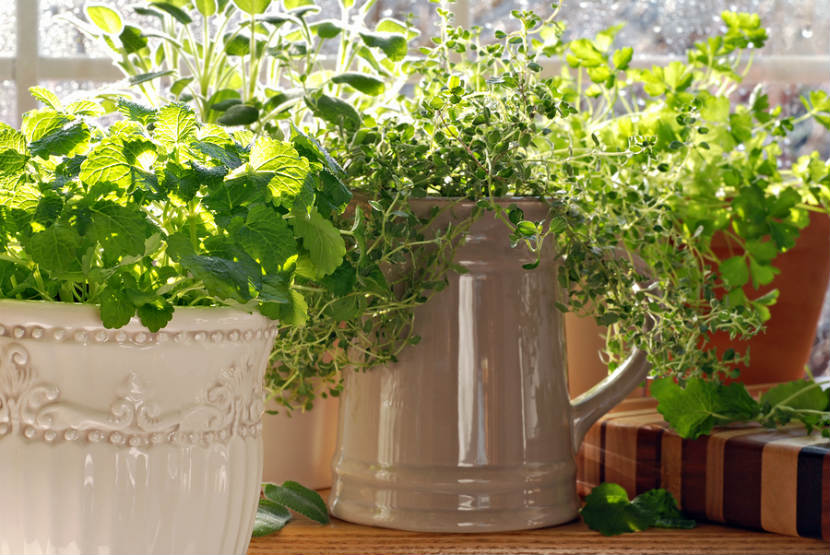
If you are concerned about how much sodium you are eating, cooking with herbs means being able to use less salt but keeping all the taste! Herbs add great flavour and aroma to food. They can grow just as well inside as out, and growing your own herbs is usually cheaper than buying them from the grocery store. Put your salt shaker away and experiment with the many different plants and varieties that you can grow.
New gardeners…
Visit a local nursery or gardening store. You can buy young plants or seeds, or consider buying an herb kit. These kits may come with tools (such as a small shovel), pots, seeds or a variety of seedlings (young plants) to help you get started.
Learn if your herb is an annual or a perennial:
-
Annuals grow for one life cycle. This means that every year you will need to start a new plant. Annuals grow best when they are started from seeds. They usually can live year round inside. Examples of annual herbs are basil, coriander and dill.
-
Perennials have more than one growing season. This means that every year they will bloom again. You can buy and plant these as seedlings. They grow best when moved outside when the weather is warmer. Examples of perennials are mint, thyme and chives.
Sunshine for herbs inside
Many herbs we buy were first grown in the Mediterranean where the climate is hot, dry and sunny. Your herbs may grow best under the same conditions. Place your herbs in windows that face south or west so they get the most sun. The heat from the sun will also help the herbs develop essential oils, which is what gives herbs their great flavour.
Watering and feeding (fertilizing) for herbs inside
Don’t over water. Too much water can cause the herbs to wilt and lose their flavour. Most herbs probably will not need to be fertilized. A plant that has been fertilized so that it grows very big may actually lose some of its flavour. Look for fertilizers that are specially made for herbs.
Pots for a herb garden
Choose clay, wood, ceramic or plastic containers with drainage holes. Some herbs require fairly large pots while others don’t mind a little crowding. Check with your garden centre or ask a Master Gardener for more information.
When the weather warms up, consider moving your plants to your yard, deck, balcony or outdoor window box. If transferring to a larger pot, add fresh soil. Transfer back inside before the first frost.
Watch your garden grow and then bring the rewards back into your kitchen!
Tips on using herbs from your indoor garden:
-
Use your herbs often. Cutting or picking the leaves will encourage growth.
-
Finely chop or cut your fresh herbs. The more surfaces you expose, the more flavour that you will release.
-
Don’t overcook your herbs because their flavours and aromas can be lost with too much heat.
-
Dried herbs are stronger than fresh herbs. One tablespoon (15 mL) of fresh herbs is equal to 1 teaspoon (5 mL) of dried herbs.
-
To dry herbs: Cut the herbs just after the dew dries in the early morning. Wash the leaves and fully dry with a paper towel. Herbs can be dried by hanging them upside down for a few weeks or in the oven. Check a reference guide for drying information for different herbs.
-
Rub dried herbs between your fingers to release more of their flavour.
-
It’s easy to freeze fresh herbs. Just wash, pat dry with a paper towel and freeze in an airtight container. Add to your cooking without thawing first.
You may also be interested in:
How to Cook with Herbs
How to Cook with Spices
Last Update – June 13, 2018